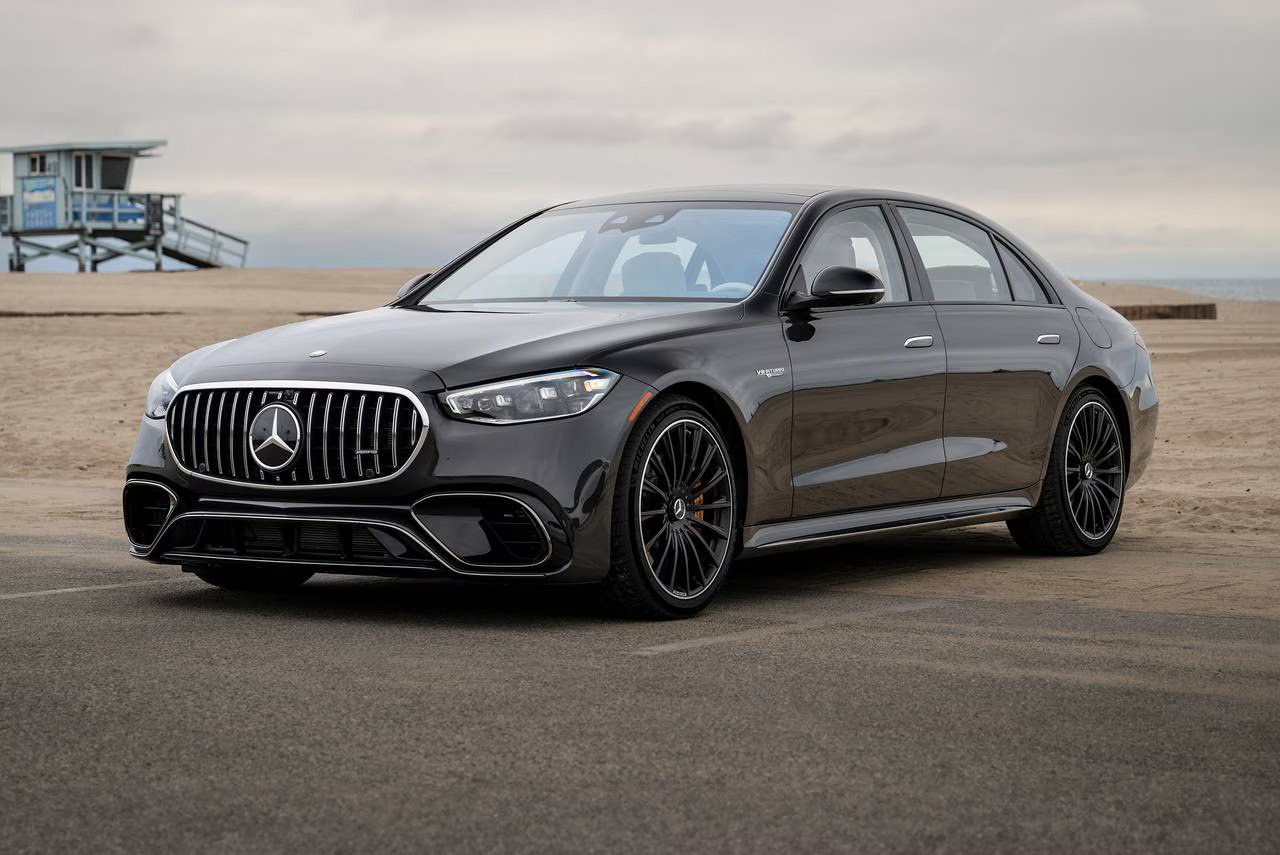When it comes to purchasing a car, many buyers focus on performance, fuel efficiency, and design, often overlooking one of the most important aspects of a vehicle: the longevity of its cabin.
The interior of a car is not just a space for comfort; it is where we spend much of our time during the daily commute, road trips, and family outings.
The longevity of a car’s interior is an often underappreciated factor in determining its value. A well-maintained cabin can retain its luxury appeal, comfort, and functionality for years, adding to the car’s resale value and enhancing the driving experience.
But not all car cabins age gracefully. Some vehicles, despite offering great performance or an appealing exterior, see their interiors quickly degrade over time.
This degradation can occur due to a number of reasons, such as poor material quality, inferior construction, and exposure to environmental factors like sunlight, moisture, or temperature fluctuations.
When these elements come into play, it doesn’t take long before the upholstery begins to crack, the plastics start to warp, the dashboard gets scratched, and the tech becomes outdated or unresponsive.
This is especially concerning for buyers who invest in cars with the expectation that their vehicle will last for many years. It’s frustrating when the cabin, a key aspect of comfort, begins to deteriorate much sooner than expected.
On the other hand, there are vehicles whose cabins age beautifully, maintaining their luxurious feel and functionality long after the car has hit its prime.
Manufacturers who prioritize high-quality materials, attention to detail, and durability ensure that the interior remains intact and welcoming for years. These vehicles often feature soft-touch plastics, premium upholstery, and well-built components that withstand the test of time.
What’s more, many of these cars come equipped with user-friendly technology that continues to serve its purpose effectively, even in older models.
The cabins of these vehicles are not only aesthetically pleasing but also functional and durable, giving owners peace of mind that their investment will last for the long haul.
When considering a car for long-term ownership, it is essential to evaluate the cabin’s potential for aging gracefully. This involves assessing the quality of materials used, the ergonomic design, and the longevity of the interior tech and upholstery.
As we delve into the topic, we’ll take a closer look at five cars whose cabins continue to look and feel fantastic as they age, as well as five vehicles whose interiors start falling apart much earlier than expected.
By examining these examples, we can better understand which cars stand the test of time and which ones may require more maintenance or early upgrades to keep their cabins looking and feeling fresh.
Also Read: 5 Cars With Back Seats You Can Sleep On and 5 You Can’t
5 Car Cabins That Age Beautifully
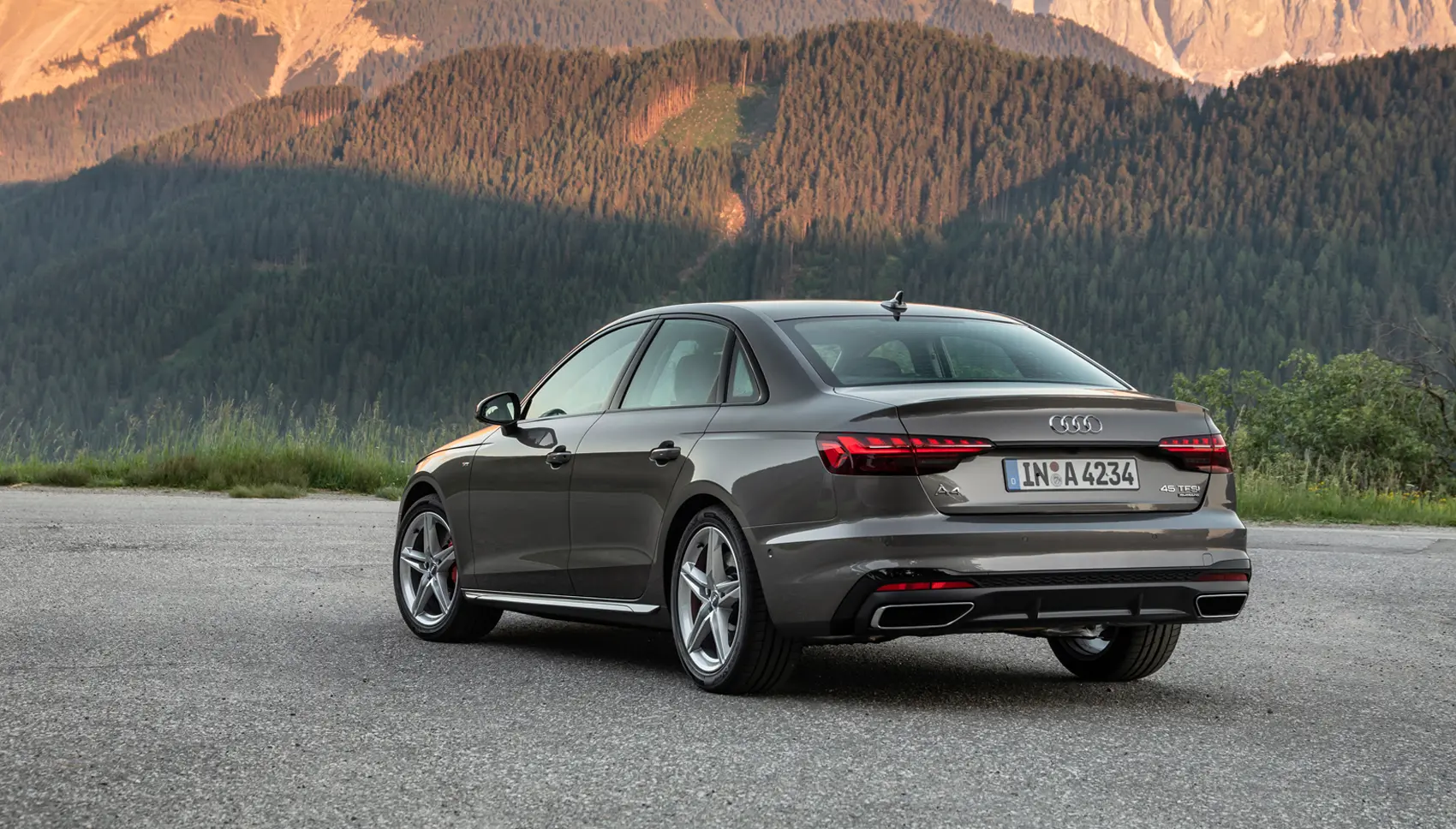
1. Audi A4
Audi has built a reputation for producing high-quality vehicles with luxurious interiors, and the Audi A4 is one of the finest examples of this philosophy. The cabin of the A4 exudes sophistication and elegance, thanks to the meticulous craftsmanship and attention to detail Audi is known for.
Over time, the materials used in the A4’s cabin—such as premium leather, polished metal accents, and soft-touch plastics—continue to impress and retain their appeal.
The leather upholstery, for instance, doesn’t just look stylish when new, but holds its integrity well after years of daily use. It resists cracking and fading, making the cabin look fresh and vibrant even in older models.
This durability is key for those who plan to keep their car for many years, as it reduces the need for frequent repairs or replacements of worn-out parts.
One of the standout features of the Audi A4’s interior is its seamless design, which combines both functionality and luxury. The dashboard layout is intuitive and easy to navigate, and the materials used throughout are carefully selected to resist wear and tear.
The interior doesn’t just age well in terms of physical appearance but also in terms of usability. The MMI (Multi Media Interface) system, which controls everything from navigation to media, continues to be functional even in older models.
Audi has a knack for creating tech interfaces that are intuitive and user-friendly, which helps ensure that older models don’t feel obsolete when it comes to technology.
Additionally, the A4’s sound system—whether it’s the standard setup or the optional Bang & Olufsen system—continues to deliver top-notch audio quality, a key aspect of maintaining the cabin’s premium feel over time.
As for the construction, Audi uses high-quality materials and tight fitment that minimize the risks of parts loosening or developing squeaks.
In many cars, especially older ones, you can start to hear rattles or creaks as the car ages, but the Audi A4 stands out as one of those vehicles where the cabin feels as solid as it did when new.
It’s not just the luxury feel that ages beautifully; it’s the functionality and durability that make the A4 a prime example of a cabin that will continue to impress for many years to come.
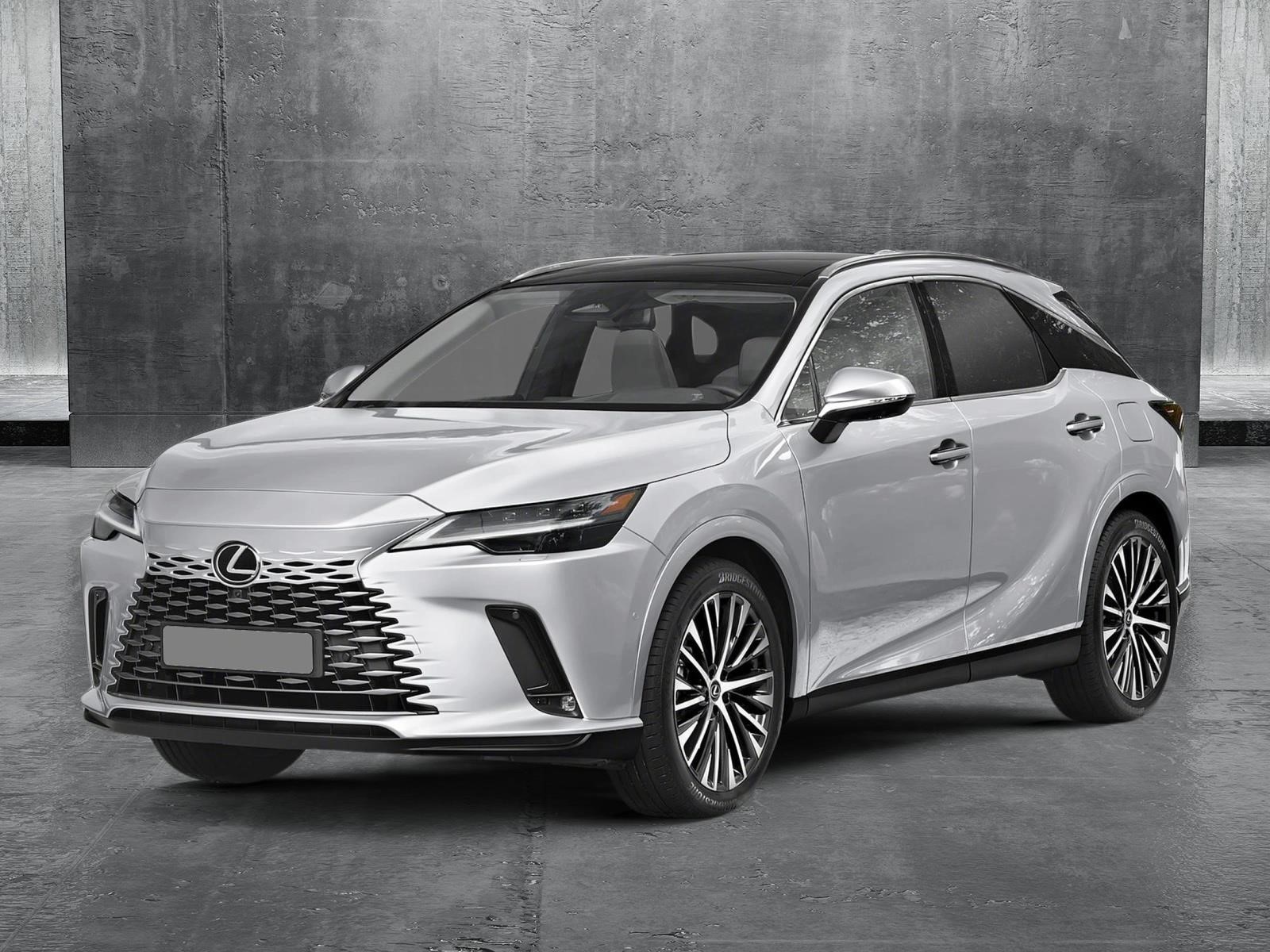
2. Lexus RX
The Lexus RX is one of the best-selling luxury SUVs, and for good reason—it’s a vehicle that strikes the perfect balance between comfort, luxury, and durability.
The interior of the RX has been designed to maintain its premium appeal throughout the years, thanks to the use of high-end materials and a focus on longevity.
The leather upholstery in the RX is thick and luxurious, providing a soft, supple feel that doesn’t easily crack or fade over time.
The quality of the leather is exceptional, and it holds up remarkably well, even after years of exposure to sunlight and other environmental factors. This ensures that the RX’s cabin continues to look and feel as luxurious as it did when it first rolled off the dealership lot.
In addition to the high-quality materials, the RX also benefits from an interior design that has aged gracefully. The dashboard layout is both clean and elegant, with easy-to-read instruments and a user-friendly infotainment system.
While technology in the RX has certainly evolved, even older models are still equipped with an intuitive and functional tech interface. The sound system, climate control, and seating adjustments remain easy to use, making the vehicle feel just as modern as when it was new.
The wood trim, a signature feature of Lexus interiors, holds up well over time, resisting scratches or discoloration.
The craftsmanship in the RX’s cabin is truly remarkable, and it’s no surprise that many owners find themselves driving the vehicle for many years without experiencing any significant degradation in the interior quality.
The Lexus RX is also known for its quiet, serene cabin, which contributes to the luxury experience. Even as the car ages, its noise isolation and smooth ride continue to impress.
While many other vehicles start to show signs of wear and tear on the interior, such as squeaks, rattles, or fading upholstery, the RX remains consistently quiet and comfortable.
It’s this combination of high-end materials, attention to detail in design, and exceptional durability that makes the Lexus RX’s cabin one that can be enjoyed for years without losing its premium feel.
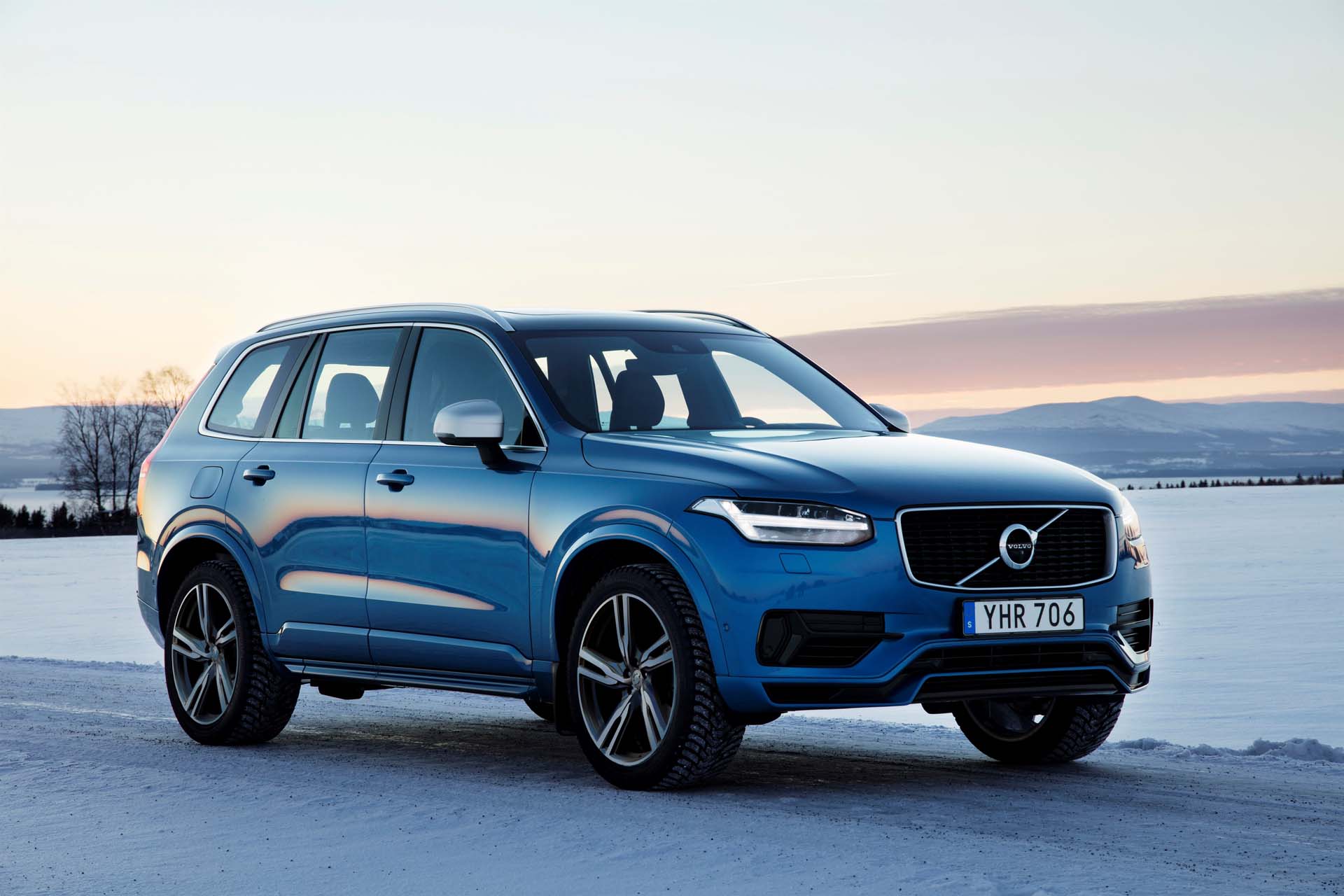
3. Volvo XC90
Volvo is known for its commitment to safety and quality, and this is evident in the XC90, a luxury SUV with a cabin that can stand the test of time. The XC90 features a minimalist interior design that emphasizes elegance and functionality, with an emphasis on natural materials like wood and leather.
These materials are chosen not only for their aesthetics but for their durability. The wood trim, in particular, is of a high quality and is carefully treated to resist scratches and discoloration. As a result, even older models of the XC90 look just as sophisticated as they did when new.
The leather seats are soft and luxurious, but more importantly, they are built to last. They don’t crack or fade easily, even with daily use, which makes the XC90 an ideal choice for long-term ownership.
The design of the XC90’s cabin is clean and uncluttered, which not only enhances its visual appeal but also ensures that it remains functional and comfortable over the years.
The seats are supportive and remain in excellent condition over time, with the upholstery showing little to no signs of wear, even on the bolsters, which are typically the first to degrade in many vehicles.
The interior of the XC90 also includes high-quality textiles and soft-touch materials that resist damage from sun exposure, ensuring that the cabin stays looking fresh and inviting for years.
Volvo has also incorporated high-tech features into the XC90, such as a large touchscreen interface and a high-quality sound system, both of which age gracefully and continue to perform well even in older models.
Additionally, the XC90’s attention to detail in craftsmanship ensures that the cabin remains solid and free of annoying noises. Many vehicles, especially as they age, develop squeaks, rattles, or loose trim, but the XC90’s build quality ensures that its cabin remains quiet and intact for much longer than most.
This makes it a great option for anyone looking for a vehicle whose interior will age beautifully, providing a comfortable, luxurious experience year after year.
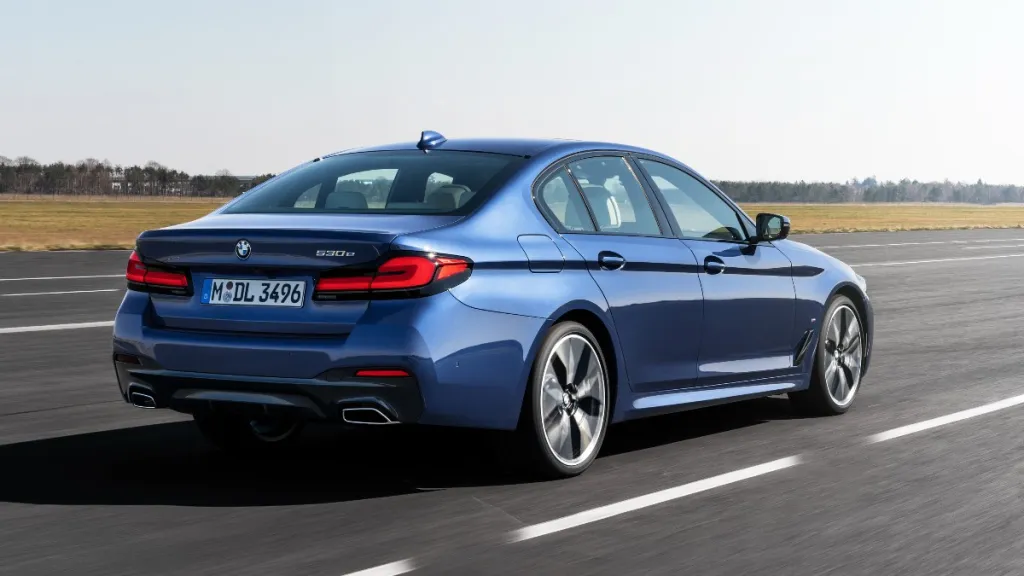
4. BMW 5 Series
The BMW 5 Series has long been known for its luxurious and finely crafted interiors, and this luxury sedan continues to impress with its ability to age gracefully. The 5 Series is equipped with top-notch materials, including premium leather, polished wood, and brushed metal, all of which contribute to its luxurious feel.
The leather used in the seats and on the steering wheel is soft yet durable, resisting the cracking and fading that often affects lower-quality upholstery over time.
The wood trim, which is both beautiful and functional, holds up well, maintaining its deep, rich color and resisting scratches and discoloration. Even the metal accents retain their sleek finish, contributing to the cabin’s timeless design.
What truly sets the 5 Series apart is the blend of luxury and practicality. The layout of the dashboard and controls is intuitive, with everything placed within easy reach of the driver. The quality of materials and fitment ensures that even as the car ages, everything continues to function seamlessly.
The seats remain comfortable and supportive for years, and the cabin remains an inviting place to spend time, thanks to excellent ergonomics and thoughtful design. BMW’s attention to detail ensures that the interior components fit together perfectly, eliminating the rattles and squeaks that can plague lesser vehicles as they age.
Even the technology in the 5 Series continues to age well. The iDrive system, a hallmark of BMW’s tech interface, has been updated over the years, but earlier versions remain user-friendly and highly functional.
The cabin’s tech, from the infotainment system to the climate control and navigation, is sophisticated yet easy to use, which means that older models still feel modern and relevant, even as new systems come to market.
Whether it’s the high-quality audio system, the easy-to-use controls, or the luxurious feel of the cabin, the BMW 5 Series offers a comfortable and enduring interior experience that continues to impress for years.
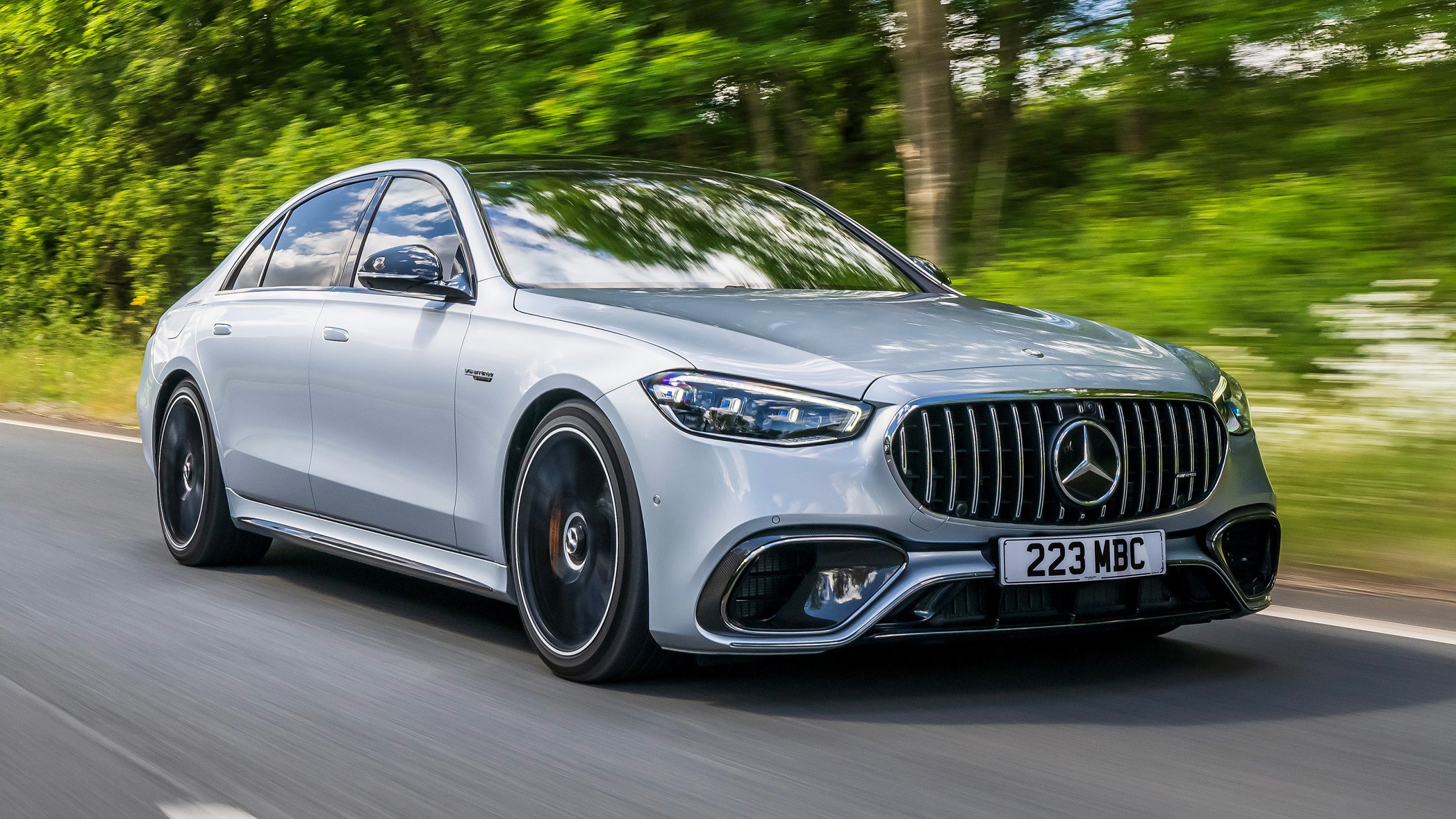
5. Mercedes-Benz S-Class
Mercedes-Benz has long been the gold standard when it comes to luxury vehicles, and the S-Class is the pinnacle of that tradition. The interior of the S-Class is nothing short of opulent, with materials that exude quality and sophistication.
From the supple leather upholstery to the polished wood and brushed metal accents, every inch of the S-Class cabin is designed to impress and to last.
The leather in the seats is carefully selected and treated to prevent cracking and fading, ensuring that it maintains its luxurious feel for years. The wood trim, often finished in rich hues like walnut or ash, retains its elegance over time, resisting scratches and discoloration that can affect lesser vehicles.
What makes the S-Class’s cabin truly remarkable is its ability to maintain its comfort and functionality over time. The seats are designed for maximum comfort and are equipped with various adjustments to ensure a perfect driving position. The upholstery remains soft and supple, with little sign of wear, even after years of use.
The cabin’s technology is also among the best in the industry, with features like advanced climate control, ambient lighting, and a high-end sound system.
The tech in the S-Class continues to evolve with newer models, but even older versions still provide a cutting-edge experience that is unmatched by most competitors. The interior also features a high level of soundproofing, which helps maintain the cabin’s quiet and serene atmosphere, even as the car ages.
The S-Class’s cabin is built with a level of precision that ensures it stays free from the typical wear and tear seen in other vehicles. The fitment of the interior components is impeccable, and there’s a level of craftsmanship that is rare in the automotive industry.
As a result, the S-Class cabin remains as luxurious and functional as ever, even as it ages, making it one of the best examples of a car whose interior maintains its beauty and comfort over time.
5 Car Cabins That Start Falling Apart Early

1. Ford Focus
The Ford Focus has been a popular choice in the compact car segment, offering a combination of affordability and practicality. However, while it may shine in performance and efficiency, its interior often falls short, particularly in terms of durability over time.
One of the most common complaints about the Focus’s cabin is the quality of the materials used. The plastic trim throughout the dashboard and door panels is low-grade and prone to cracking or discoloration.
In older models, especially those exposed to direct sunlight or extreme temperature changes, these plastics become brittle and start to show signs of wear much sooner than you’d expect for a vehicle of this class.
The dashboard, which might have initially appeared sleek, begins to show its age, with cracks appearing in the surface, and the once-smooth plastic feeling rough or chipped.
The upholstery, which often uses cheaper cloth or synthetic materials, is another area where the Focus begins to lose its appeal after just a few years.
The seats, though comfortable when new, tend to show signs of wear relatively quickly. The cloth can stain easily, and after frequent use, it loses its original texture, becoming flat and lifeless.
In some cases, the seat bolsters, which are often subjected to the most stress from getting in and out of the vehicle, start to lose their padding, resulting in a less comfortable ride.
Leather seats, when offered in higher trims, aren’t much better—over time, they crack, fade, or become discolored, diminishing the cabin’s appeal.
Another area where the Ford Focus cabin begins to fall apart early is in its tech and functionality. While the infotainment system may seem adequate when the car is new, older models quickly begin to feel outdated.
The center console, with its array of buttons and knobs, often starts to feel clunky and less responsive over time. This can be especially frustrating when the system becomes slow or unresponsive, leading to a less-than-ideal user experience.
The seats and controls, which may have initially felt intuitive, begin to feel cheap as their components start to degrade. These issues, combined with the interior’s lack of refinement, make the Focus a car whose cabin doesn’t age well, often forcing owners to deal with cosmetic and functional degradation long before they expect to.
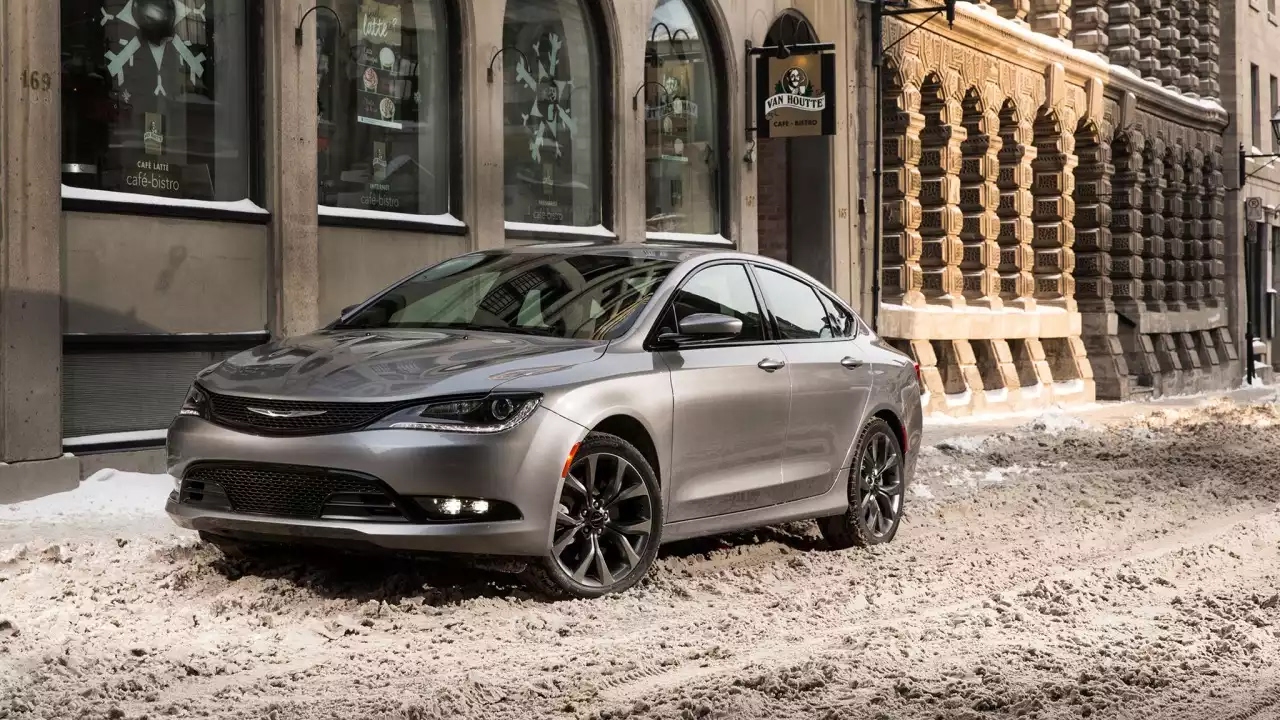
2. Chrysler 200
The Chrysler 200 was marketed as a mid-size sedan with a focus on luxury and comfort, but its interior fails to meet the expectations of durability and long-term appeal. The cabin of the 200, while stylish when new, suffers from significant quality issues as it ages.
The materials used throughout the interior, particularly the plastic trim and upholstery, degrade quickly. The hard plastics that cover the dashboard and door panels begin to crack or warp, especially in regions where the sun hits directly.
Over time, these plastics lose their sheen, turning into dull, brittle surfaces that not only look unappealing but can also make the cabin feel cheap.
The armrests and center console, in particular, are notorious for showing signs of wear quickly, with the soft-touch materials breaking down or rubbing off, leaving behind unsightly marks or scratches.
The seats, whether leather or fabric, are another weak point in the Chrysler 200. While the leather upholstery may initially look luxurious, it tends to crack and peel after a few years of use. In lower trims that feature fabric seats, the fabric often starts to fade, especially in areas that receive heavy use, like the bolsters.
The fabric material tends to stretch or lose its shape over time, making the seats uncomfortable and visually unappealing. The stitching on the seats can also unravel, further detracting from the cabin’s aesthetic.
After just a few years of use, the seats no longer feel as supportive or comfortable as they did when the vehicle was new, which can significantly impact the driving experience, especially on long journeys.
Additionally, the Chrysler 200’s interior suffers from subpar ergonomics and a cluttered dashboard design that doesn’t hold up well with time.
While the cabin was initially designed with modern features and technology, these elements quickly became outdated. The infotainment system, which initially might seem cutting-edge, is slow and cumbersome in older models.
The buttons and dials on the dashboard begin to lose their tactile response, becoming unresponsive or sticky. The interior layout, which seemed fresh and stylish in newer models, quickly feels dated as the car ages, with the once-appealing materials and finishes becoming dull and worn.
These factors combine to make the Chrysler 200’s cabin a prime example of a vehicle whose interior starts to deteriorate long before its exterior does.
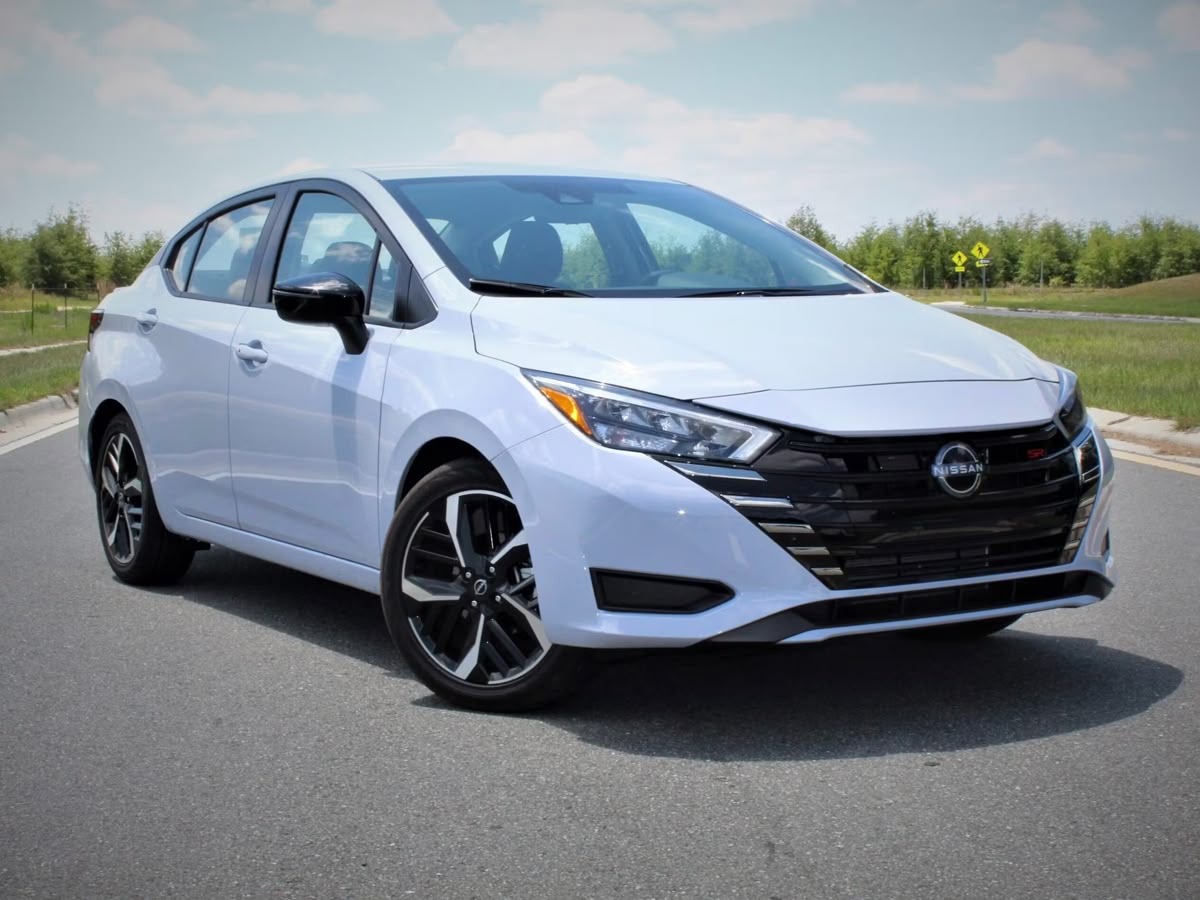
3. Nissan Versa
The Nissan Versa is a budget-friendly compact car that offers excellent fuel efficiency, but its cabin is an area where the vehicle shows its limitations early on. The interior of the Versa is constructed from cheap, low-quality materials that are not built to withstand the test of time.
The hard plastics used throughout the cabin are prone to cracking, fading, and scratching, and this becomes especially noticeable after just a few years of ownership.
The dashboard and center console, which might have looked sleek and modern when new, begin to show their age, developing scuff marks and discoloration that make the vehicle’s interior look worn out.
In older models, the plastic parts start to feel brittle, and the once-smooth surfaces begin to degrade, leaving the cabin feeling cheap and poorly constructed.
The seats in the Nissan Versa are another area where the car falls short. The fabric upholstery, while comfortable initially, begins to degrade over time. The fabric can become stained and difficult to clean, leading to an unsightly appearance.
Over time, the fabric stretches out, loses its elasticity, and starts to develop worn patches, especially on the seat bolsters where drivers and passengers repeatedly enter and exit.
The foam padding underneath the upholstery can also become compressed, causing the seats to lose their initial comfort and support. In higher trim levels where leather upholstery is offered, the material tends to crack and peel, exacerbating the cabin’s deterioration.
The Nissan Versa’s tech and interior features also become obsolete quickly. The infotainment system in the Versa is one of the weakest points, especially in older models. The interface is slow and outdated, lacking many of the features that are standard in newer vehicles, such as smartphone integration and advanced navigation options.
The buttons and knobs controlling the climate system and audio settings can become stiff and unresponsive with age, leading to a frustrating user experience.
In summary, while the Nissan Versa offers great value upfront, its cabin quickly falls apart due to its cheap materials and lackluster design, making it a vehicle that doesn’t age well.
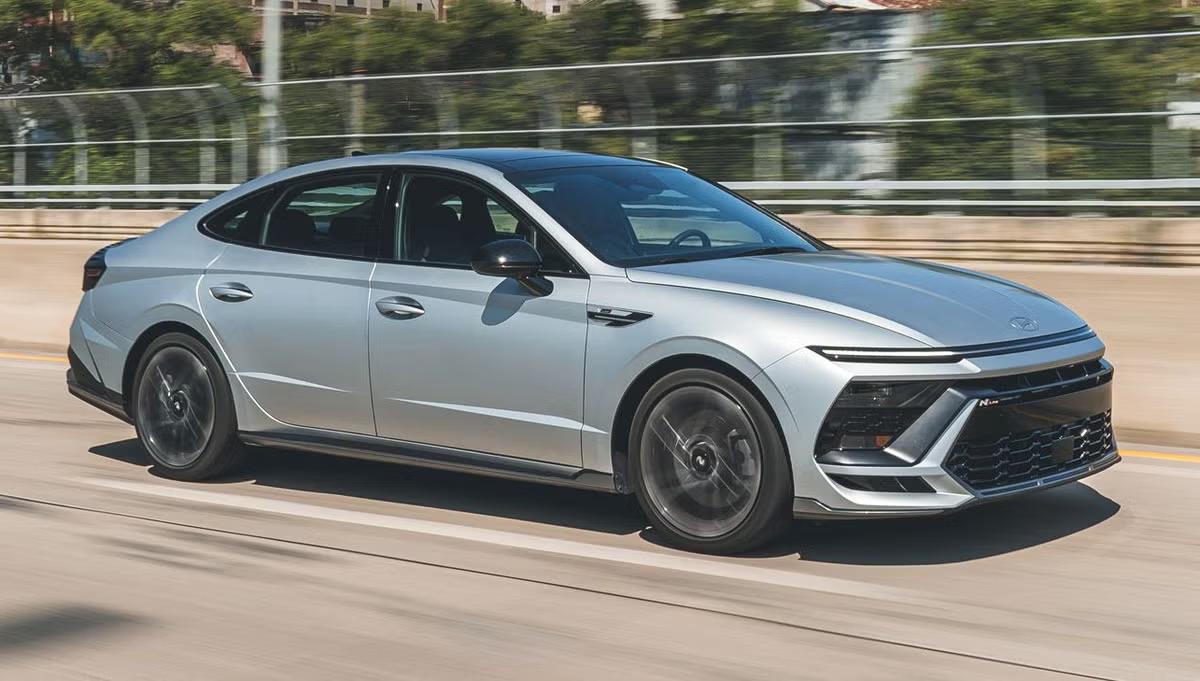
4. Hyundai Sonata
The Hyundai Sonata has long been one of the most popular midsize sedans, offering a combination of affordability, style, and practicality. However, the interior of the Sonata is one area where the vehicle fails to live up to expectations over time.
The cabin features a combination of low- to mid-grade plastics and synthetic materials that can begin to degrade after just a few years of use.
The plastics on the dashboard, door panels, and center console can scratch easily, and over time, they begin to lose their finish, turning dull and scratched.
The materials, which may have appeared sleek and stylish when the car was new, age poorly, leaving the cabin looking worn and cheap as time passes. The fitment of parts also becomes an issue, with trim pieces becoming loose or misaligned, leading to annoying rattles and squeaks that detract from the driving experience.
The upholstery in the Sonata, whether fabric or leather, also suffers from poor durability. The fabric seats can stain easily and are difficult to clean, often leading to a dull and faded appearance. The leather seats, though initially soft and luxurious, begin to crack and peel after a few years of exposure to sunlight and wear.
The foam padding inside the seats loses its shape and resilience, leading to a less comfortable experience over time. The Sonata’s seats, which may have been comfortable when new, lose their original cushioning and support, leaving passengers feeling less comfortable on longer trips.
Technology in the Hyundai Sonata also becomes outdated quickly. The infotainment system, which may have seemed advanced when the car was new, is slow and cumbersome in older models. The controls, which initially felt easy to use, become less responsive, and some features may start to malfunction.
The lack of modern connectivity features, such as Apple CarPlay or Android Auto, in older Sonata models further contributes to the cabin feeling dated. The combination of cheap materials, uncomfortable seating, and outdated tech makes the Hyundai Sonata’s interior a prime example of a cabin that begins to deteriorate long before its exterior does.
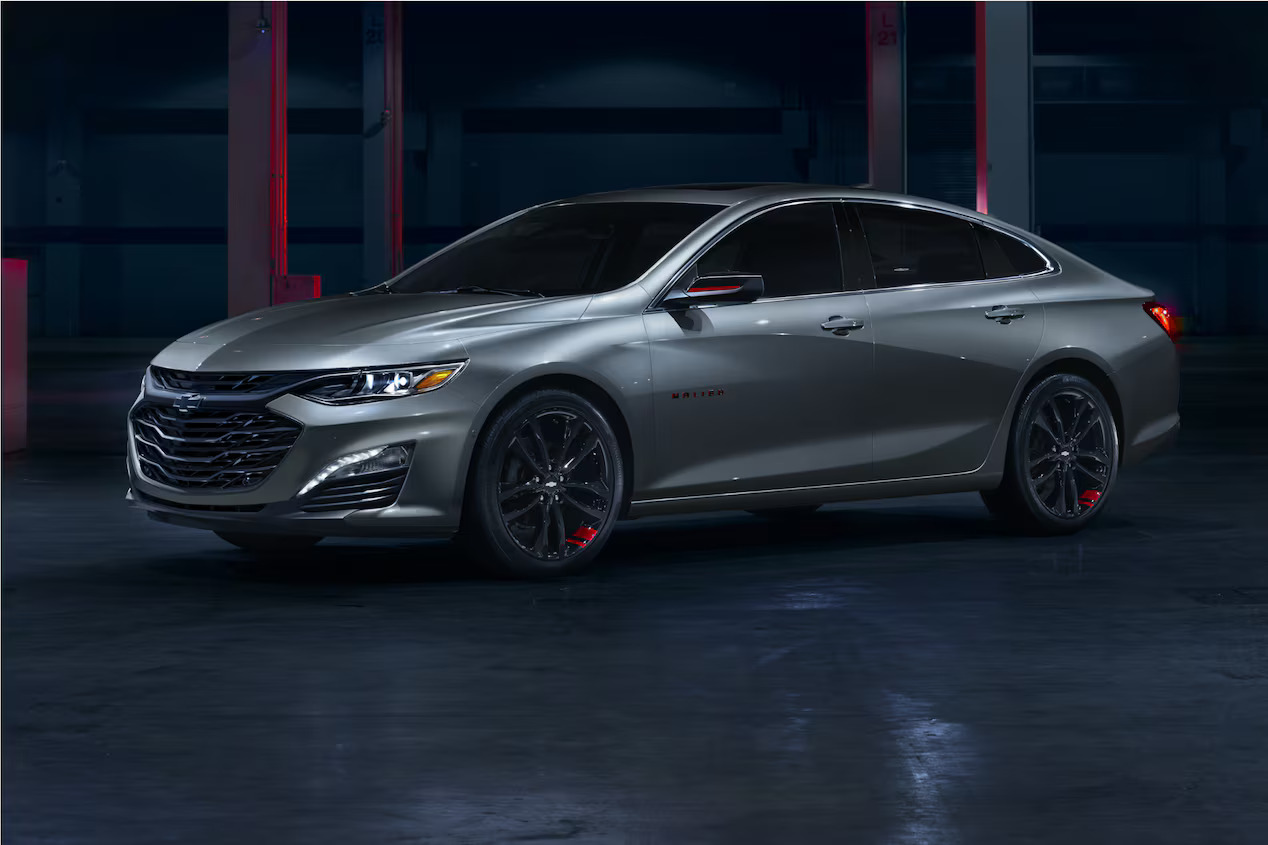
5. Chevrolet Malibu
The Chevrolet Malibu is a midsize sedan that is known for its comfortable ride and practicality, but its interior doesn’t age as well as some other vehicles in its class. The cabin of the Malibu, while initially functional and spacious, starts to show signs of wear and deterioration much sooner than expected.
The materials used throughout the cabin are often of lower quality, particularly the plastics on the dashboard, center console, and door panels. These materials begin to crack, warp, and discolor after just a few years of use, and the interior starts to feel cheap and poorly constructed.
The dashboard, once smooth and sleek, begins to show visible signs of wear, with scratched surfaces and fading trim. The Malibu’s interior doesn’t hold up to the elements as well as some of its competitors, making it a prime example of a vehicle whose cabin falls apart prematurely.
The seats in the Chevrolet Malibu are another weak point. The fabric upholstery, which may have looked clean and sharp when new, quickly starts to show signs of wear.
The fabric becomes easily stained and difficult to clean, and over time, it begins to fade and stretch. The leather seats, while more luxurious, still suffer from premature cracking and peeling.
The foam padding inside the seats compresses with use, leading to discomfort over time. The once-supportive seats lose their shape, making longer trips less enjoyable and leaving the cabin feeling less refined. The wear on the seats can detract from the comfort of the car, which is one of its selling points when new.
Finally, the Chevrolet Malibu’s technology and interior features are another area where it begins to feel outdated quickly. The infotainment system, which may have been considered cutting-edge when the car was new, is slow and cumbersome in older models. The controls on the dashboard lose their tactile feel, becoming sticky or unresponsive.
The vehicle’s ergonomics and interior design, which may have seemed modern at first, quickly feel out of place as the car ages, making the interior experience less enjoyable.
The combination of low-quality materials, uncomfortable seating, and outdated technology makes the Chevrolet Malibu one of those cars whose interior simply doesn’t stand the test of time.
Also Read: 7 SUVs That Allow Full-Height Box Loading With Ample Cargo Space
The Importance of Longevity in Car Interiors
When purchasing a vehicle, it’s easy to become enamored with its exterior design or performance metrics. However, the cabin of the car, where we spend a significant amount of time, can often be an afterthought.
As we’ve seen from our examination of various vehicles, some cabins are built to endure, while others deteriorate far quicker than anticipated.
A well-crafted cabin enhances not only the resale value of a car but also the daily driving experience, making long-term ownership far more enjoyable. A car’s interior is not just about comfort; it’s a reflection of the build quality and the materials used, which can significantly affect a vehicle’s longevity.
Vehicles that age beautifully tend to feature high-quality materials, attention to detail, and thoughtful designs that are not only luxurious but also durable. Luxury automakers like Audi, Lexus, and Volvo have demonstrated an understanding of how to design interiors that withstand the wear and tear of everyday life while maintaining their appeal.
These vehicles provide their owners with a lasting sense of comfort and sophistication, ensuring that the interior remains just as enjoyable to sit in after years of ownership. Their cabins are a testament to the importance of investing in quality materials and superior craftsmanship.
On the other hand, there are vehicles whose cabins start to degrade far earlier than expected. Whether it’s due to low-grade materials, poor fitment, or outdated technology, some cars fail to provide long-term satisfaction in terms of interior quality.
Manufacturers like Ford, Chrysler, and Nissan, while delivering great vehicles in terms of value and affordability, often overlook the long-term durability of their cabins, leading to issues like cracked plastics, worn upholstery, and outdated tech. These problems can significantly detract from the driving experience and result in a need for costly repairs or replacements.
Ultimately, when selecting a car, it’s important to consider not just its current condition but its potential to withstand the rigors of daily life. The longevity of the interior plays a critical role in determining whether a vehicle will provide value for years to come.
Investing in a car with a cabin that is built to last can make all the difference in maintaining both the aesthetic appeal and comfort of your vehicle as it ages. By considering these factors, you ensure that your car continues to provide a superior experience, no matter how many years or miles pass.

